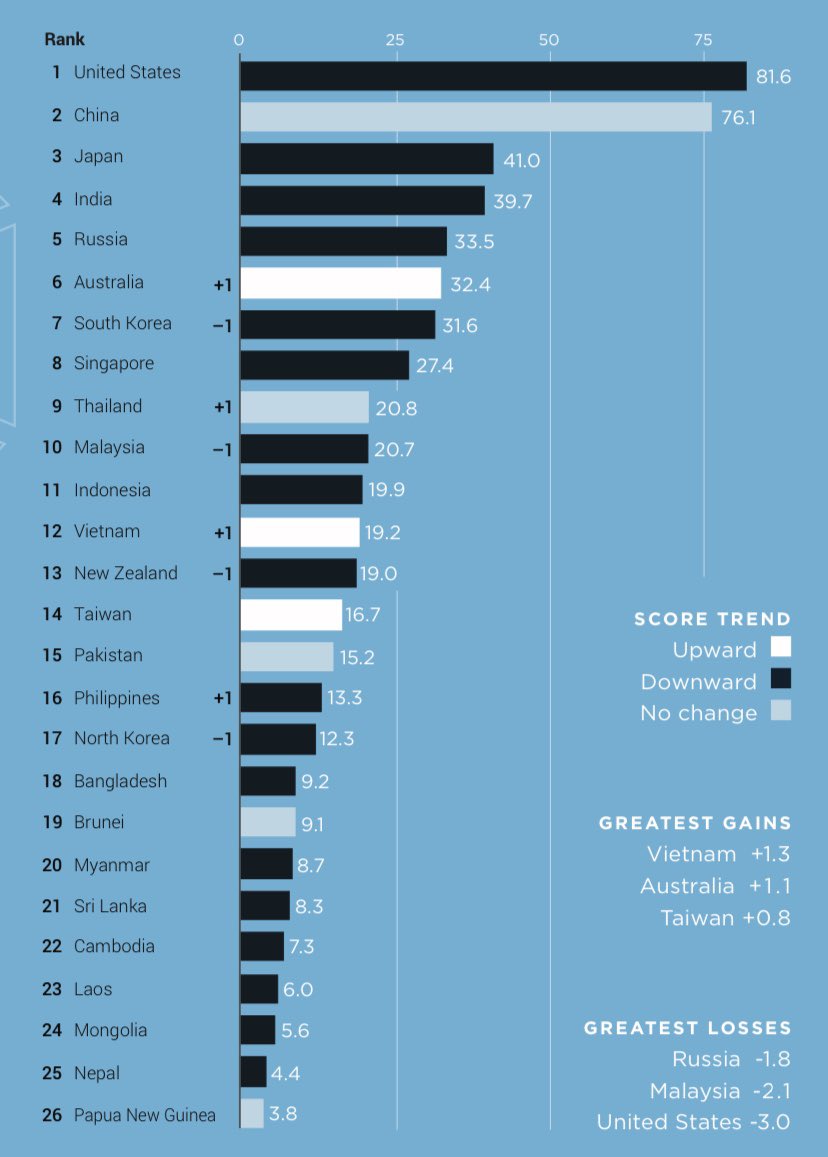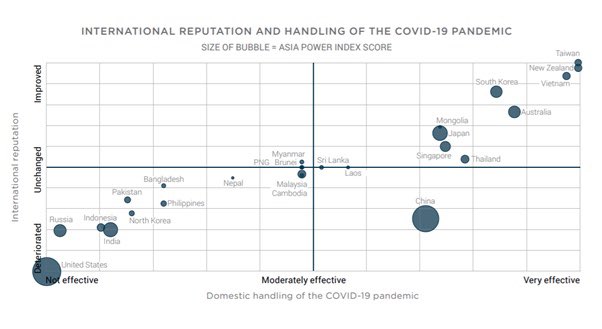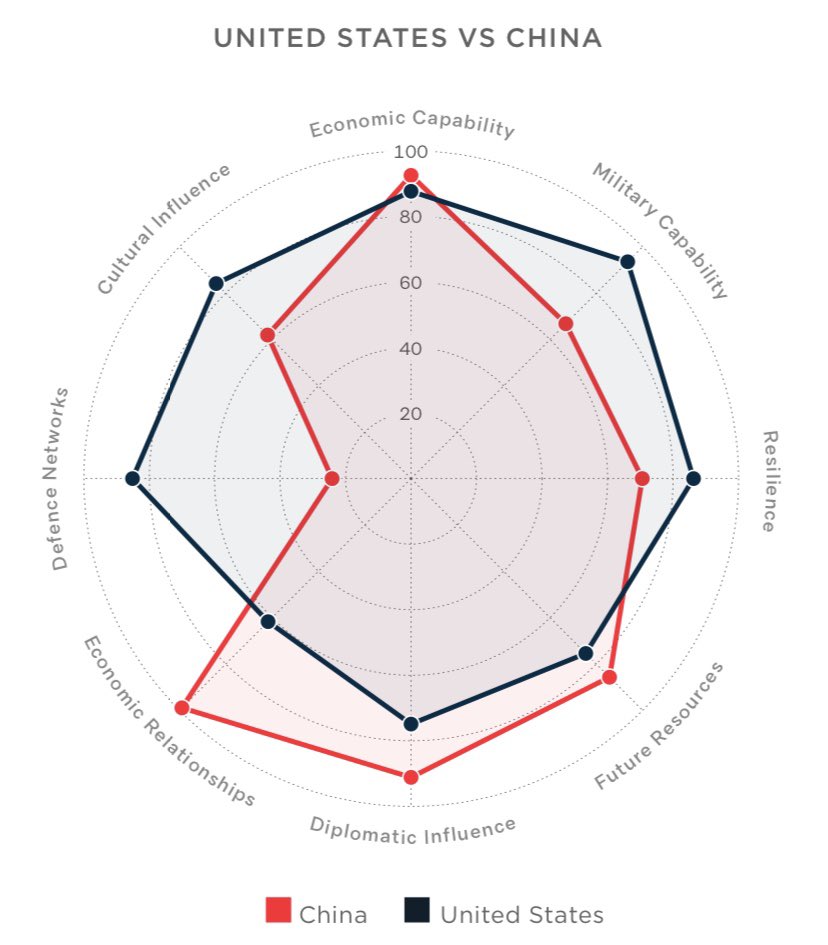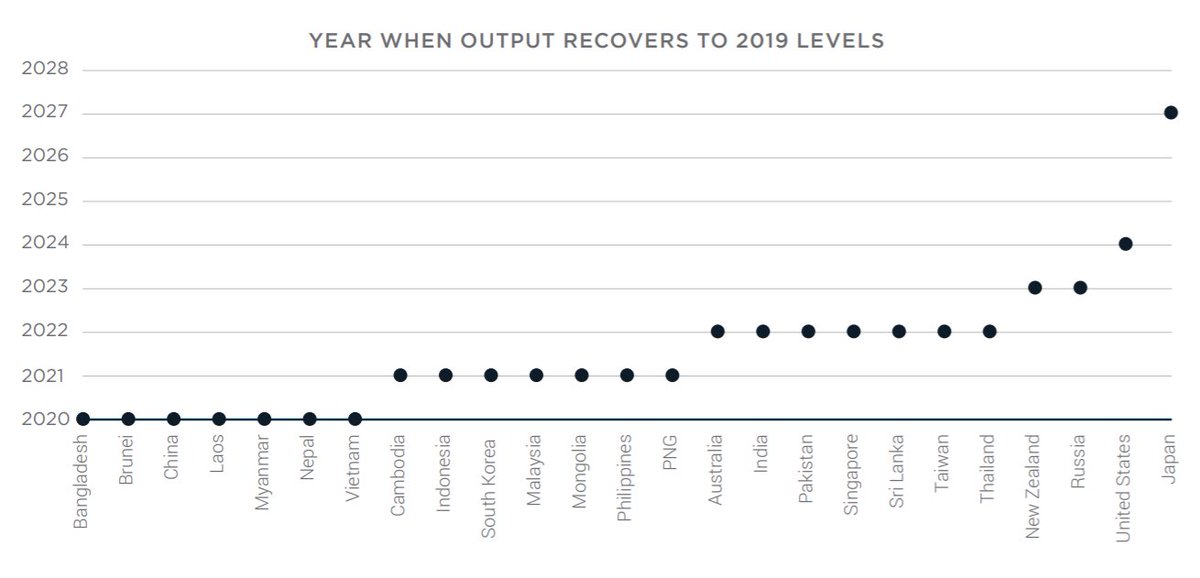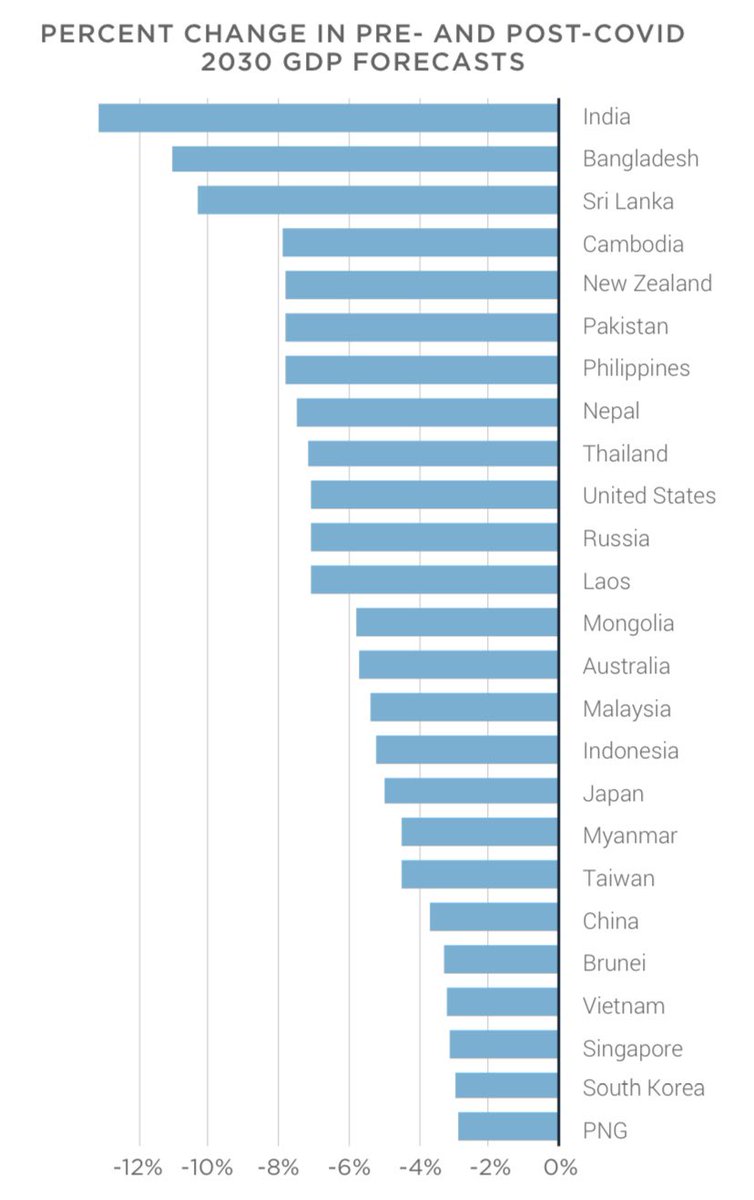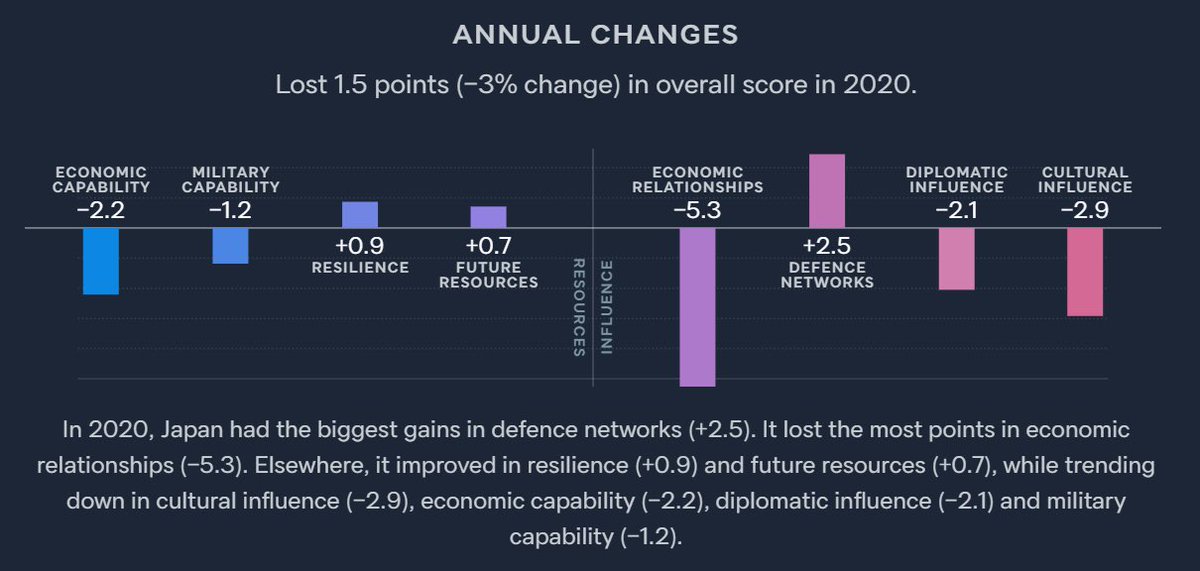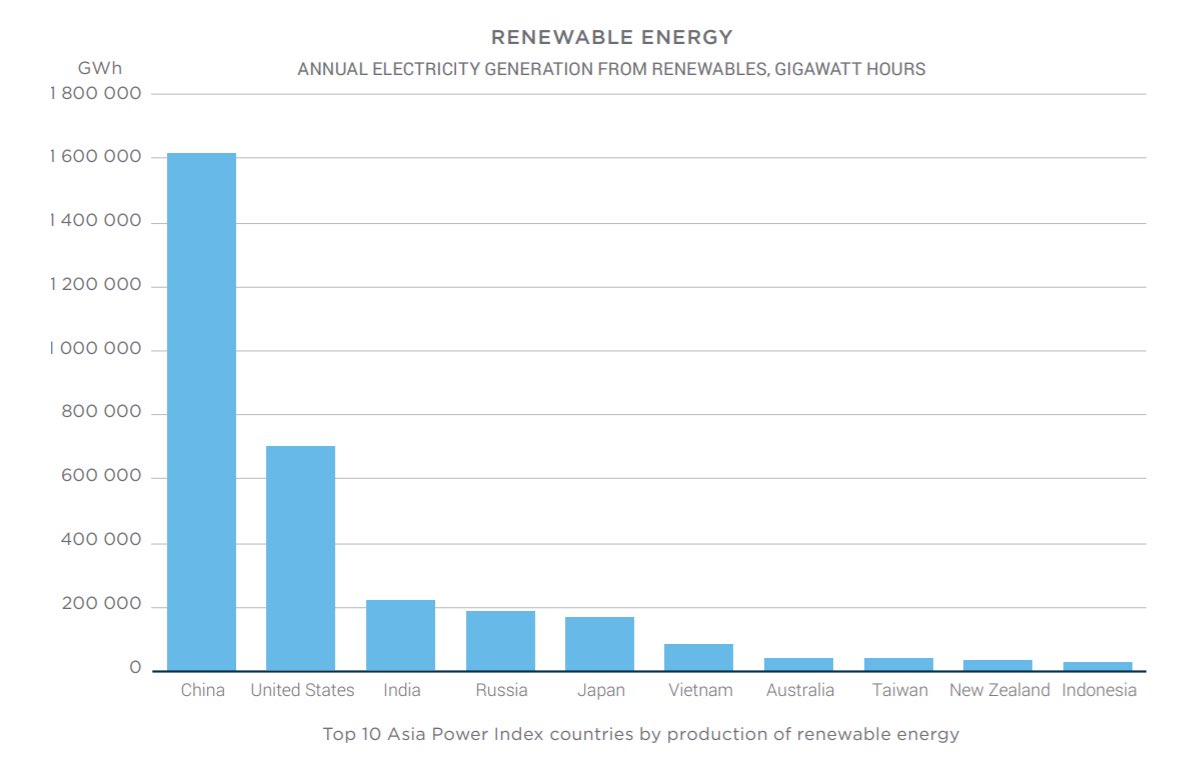Thread with some analysis of the @LowyInstitute 2020 Asia Power Index. As always, there’s a lot to unpack. The full report is here: https://power.lowyinstitute.org/downloads/lowy-institute-2020-asia-power-index-key-findings-report.pdf">https://power.lowyinstitute.org/downloads... But a few clear themes standout, the most notable of which is of course the impact of the pandemic on the balance of power. https://twitter.com/hervelemahieu/status/1317810195490222080">https://twitter.com/hervelema...
1/ Power shifts happen only slowly outside of wartime. But the pandemic changes that. COVID-19 has rushed in a new regional disorder, in a race to the bottom between Asian powers. Eighteen states in the Indo-Pacific registered sharp downward shifts in their relative power in 2020
2/ Both superpowers emerge diplomatically diminished. But the US has lost more relative power than any other country in the Indo-Pacific in 2020. Its lead over China has narrowed by half in 2 years. A loss of US prestige from the poor handling of the pandemic plays a hand in this
3/ China‘s power is unchanged as its stark strengths & weaknesses have grown. Still a far less rounded superpower than the US. The party state spends more on projecting power inwards, on internal security challenges, than it does on projecting it outwards, on military spending.
4/ An uneven sequencing of economic recoveries in the region will likely have a longer lived effect on the balance of power than losses of prestige. China is the first major economy to bounce back in 2020. Yet it may take Japan until 2027 to recover to pre-COVID levels of output.
5/ Advanced economies may take longer to recover, but some of the largest emerging economies have been hardest hit relative to their growth paths prior to the pandemic. India may only reach 40% of China’s GDP output by the close of the decade, down from 50% forecast last year.
6/ India falls short of the major power threshold in 2020. Its rise as a superpower, if it happens, will be a multi-decade effort. But its ambition is evident. New Delhi overtook Seoul & Moscow to finish 4th for diplomatic influence — even as it falls behind on trade integration.
7/ The only major power left standing in 2020 is an overachiever but one in structural decline. Tough new gig for PM Suga. Tokyo has reached near parity with 1st placed China for diplomatic influence. Japan also surpassed SK and achieved its highest gains for its defence networks
8/ The silver lining in a race to the bottom: Vietnam, Australia & Taiwan are the only players to gain relative power in 2020. They prove that when neither the US nor China can assert undisputed primacy, the actions, choices & interests of middle powers become more consequential.
9/ Aus is one of the few advanced economies to benefit from a growing working-age population. A true ‘Goldilocks zone’. Yet net migration intake has declined to negative levels. Failure to reverse this in coming years will impact its fundamentals as a young & growing middle power

 Read on Twitter
Read on Twitter